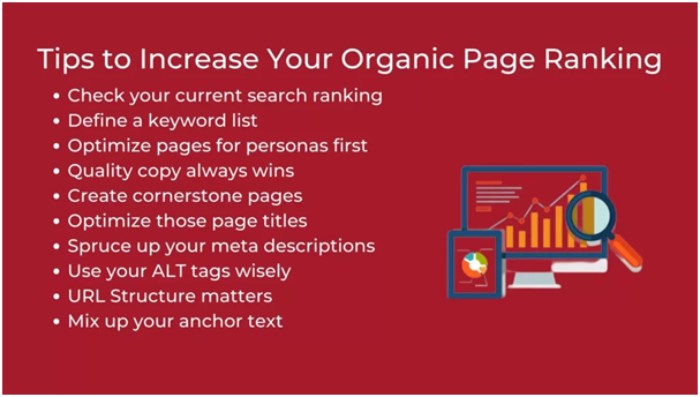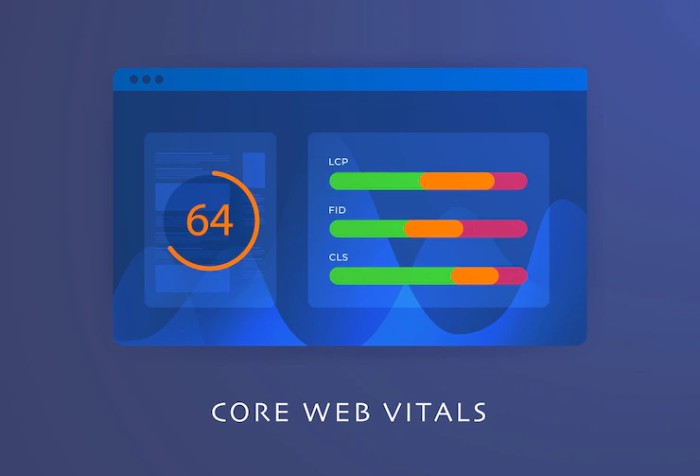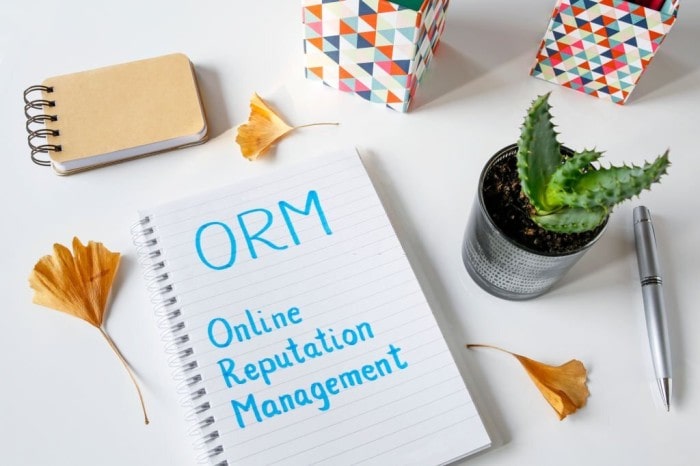How to Increase Organic Traffic to Your Site
- Identify and Fix Non-Performing Content.
- Find New Keyword Opportunities.
- Optimize for Higher
- A blog to Increase Ranking Keywords Fast.
- Improve Site Architecture to Get
- Dominate Featured
Organic search is responsible for 51% of all web traffic and 40% of all revenue. That is why search marketing teams are always striving to increase organic traffic.
1. Identify and Fix Non-Performing Content
Non-performing content is content that doesn’t help a website meet its marketing goals, such as boosting organic traffic, conversions, or referrals from other websites. It’s not helping you, and it can even be hurting your prospects of increasing organic search traffic.
This is due to the fact that non-performing content depletes the crawl budget, which is a limited resource used by search engines to determine how many and which pages of a website to index. If your site has a lot of non-performing content, search engines will become stuck crawling it and leave before crawling the good stuff.
If non-performing content is detected and eliminated, search engines will have enough budget to crawl the site’s most important pages and articles. In the long run, this content will rank better in the SERPs, resulting in more organic clicks.
First, figure out which pages on your site are generating the most backlinks, traffic, ranking keywords, and conversions. A content audit is the most effective way to do this:
2. Find New keywords Opportunities to increase organic traffic.
Even the most successful keyword strategy is bound to contain problems. That’s only natural: new, relevant keywords surface frequently, and adding new product features generates new keyword potential. Content creation takes time to incorporate such prospects into the keyword strategy.
Don’t skimp on a keyword strategy that fills in the blanks, though. Unused keyword chances can hinder organic traffic growth and give competitors an advantage. You can improve both search traffic and brand visibility by identifying opportunities and incorporating them into iterations of your keyword strategy.
* how to find keywords opportunities
Enter your website or a relevant term into the tool. This will produce a list of related keyword suggestions, which you may sort to find the most popular.
Remove any terms that aren’t relevant to the Competitive Power of your website. This is an Alexa metric that identifies which keywords you can rank for and which you can’t. It’s determined by how well your site has previously fared in organic search.
You can map the search intent of the keyword opportunities by actually googling them and seeing what type of content ranks well.
3. Optimize for higher CTR
When it comes to organic search traffic, getting to page one is only half the battle; you also have to persuade searchers to click on your result rather than one of your competitors.
Optimizing the click-through rate (CTR) has two advantages. To begin, you’ll steer search traffic away from competitors’ sites and toward your own, resulting in an increase in organic visitors. Second, you’ll send favorable signals to search engines: Having a high CTR is one way Google prioritizes search results.
4. A blog to increase website ranking Keywords Fast
Blogging is one of the most effective strategies to increase the number of keywords your site ranks for, particularly non-branded keywords. Blog entries, which include top-of-funnel educational content, establish your organization as an expert in your field while also allowing you to show off your product to others looking for comparable information.
Gated content can assist fill the sales funnel with qualified leads, therefore blogging can aid your marketing funnel and B2B marketing strategy.
Blog content that meets real consumer needs, on the other hand, will enhance organic traffic. Searchers may be turned off by a blog strategy that is only focused on products or services.
5. Exploit Site Architecture to get site link
The architecture of your site influences how crawlers access it as well as how human searchers explore and interact with it. Crawlers won’t be able to tell which pages or articles are the most important to your site if your site architecture is complicated. Users may be unable to find the information they need, leading them to leave the site. As a result, search engines send your site bad ranking signals, and it falls down the SERPs.
Good architecture improves organic traffic by putting your site higher in the results and increasing the chances of having site links displayed in SERPs.
6. Dominate feature snippet.
In 2016, Google introduced highlighted snippets. These enriched results are intended to respond to a searcher’s query right on the results page, removing the need for the user to leave Google in order to find the information they need.
New Google features such as highlighted snippets and the knowledge graph are causing fewer people to discover your website via search results. It doesn’t have to be that way, though.
Smart structure and content are critical for improving organic traffic with highlighted snippets. By pushing competition results lower in the rankings, you’ll gain brand exposure as well.
10 Tips to Increase Organic Traffic and Page Ranking
1. Check your Current search Ranking.
Before attempting to increase your website’s search rating, it’s vital to understand your current position in Google’s search results.
If you understand this information, you’ll be able to see where you need to improve and build a solid foundation from which to work. Using tools like SERPs.com, you may see where a site page ranks for a given keyword or term.
Once you’ve entered this information, you’ll be able to examine your page’s search ranking on Google, Yahoo!, and Bing, as well as its loading speed. You’ll be able to determine which efforts to undertake to increase your site’s total organic search ranking by preserving this data.
2. Define a Keywords list
Now that you know where your pages rank for certain key terms, you’ll be able to refine and define a keyword list that you can use to base your website’s content around – in other words, you’ll be able to pick the most relevant keywords for your site to bring in related traffic that boosts your page ranking.
If you target the right keywords for each page of your website based on what you’re trying to sell, the message you’re trying to communicate, and where you expect to meet the customer on their buying journey, you’ll see a huge rise in your organic search ranks.
3. Optimize a page for persona first, search engine second.
When buyer personas are implemented, a website becomes two to five times more effective and easier to use for targeted consumers.
Now that you know where your pages rank for certain key terms, you’ll be able to refine and define a keyword list that you can use to base your website’s content around – in other words, you’ll be able to pick the most relevant keywords for your site to bring in related traffic that boosts your page ranking.
If you target the right keywords for each page of your website based on what you’re trying to sell, the message you’re trying to communicate, and where you expect to meet the customer on their buying journey, you’ll see a huge rise in your organic search ranks.
4. Quality copy always wins
To work for search engines, quality writing with powerful anchor text and well-defined headlines is essential. Marketers have had to focus on offering the best user experience possible since Google’s Panda algorithm update in 2011 (which caused many websites’ search authority to plunge), in order to rank well. Good copywriting that incorporates keywords sparingly and naturally is the key to enhancing your organic results, allowing you to humanize your business while giving a better customer experience.
5. Create cornerstone pages
The chances of your website having numerous pages loosely based on the same subject or keyword are great. Innovative cornerstone content can also assist you in increasing your search profile and increasing brand awareness.
When you construct one cornerstone page made up of essential material from your website’s other pages, you’ll produce a rich, informative, and authoritative master resource for search engine bots to crawl.
Innovative cornerstone content can also assist you in increasing your search profile and increasing brand awareness.
6. Optimize those page titles
HTML is crucial when it comes to Google and other major search engines.
tag is a crucial piece of information for your website, and it should be well-organized.
The title tag should be a succinct synopsis of the material on your page, and no two title tags should ever be the same (Google hates duplication). To help improve your page’s organic search ranking, keep your title tag around 70 characters long, with the most relevant or primary keywords near the beginning. It’s also a good idea to include your brand keyword if you want to improve your brand authority (the keyword used to search for your company name or a version of it).
As an example, consider the following:
The HTML title tag is a crucial piece of metadata for your page, and it should be properly designed.
Esquire Mag has included the keyword they want to rank for at the start of their page’s title tag (it currently ranks number one in Google’s organic search results); it then goes on to describe the page’s content in a more engaging way that uses the words’buns’ rather than the term burgers – this serves to broaden the net. Keyword-rich, appealing, concise, and natural is the best ingredients for a great title tag.
7. Increase organic traffic Spruce up your meta descriptions
While your meta description isn’t a direct ranking element for search crawlers, it does have an impact, and if written well, it can inspire readers to click through to a page, improving its authority and helping your website rank for specific keywords. Furthermore, if you include your target keywords in the description, Google will bold them in the SERPS, making your page more accessible to web searchers.
Although your website’s meta description isn’t a direct ranking criterion for search crawlers, it does play a role in SEO.
Each meta description should be unique, contain keywords, and be under 160 characters long.
This is a great example of a meta description… This is a wonderful meta description example.
Not only does this meta description have a high Google review star rating, but it’s also short, to-the-point, and ends with a powerful call to action.
8. Use your ALT tags wisely
This is the kind of example you’d find in a content management system like WordPress, and it involves your photos. Many people overlook the ALT tag since it isn’t visible when an image is shown on a web page. It does, however, play a substantial role in improving page ranking.
Image alt tags have a big impact on your website’s organic ranking.
Your alt tags will be read to a user by screen readers for the visually impaired. This HTML element serves as a usability aid for search engine crawlers. By putting a term specific to the page in an ALT tag, you can help improve your web page’s organic search ranking.
9. URL Structure matters
The structure of your URL is critical; keep it between 50 and 60 characters long.
Although search engines such as Google and Bing can easily accommodate longer URLs, MOZ research suggests that shorter URLs perform better in natural search.
A URL that is fewer than 100 characters long is preferred, and one that is 50 to 60 characters long is even better.
10. Mix up your anchor text To Increase organic traffic
We’ve already talked about anchor text, so let’s go over it again.
So, what is anchor text, exactly? Google employs anchor text to determine the topic of the linked website. And it looks to be this way…
Google employs anchor text to determine the topic of the linked website.
When linking to something in a post, both externally and internally, instead of wasting an SEO boost opportunity by referring to something like you should try to use variations of target keywords relevant to the page you’re leading readers to.










